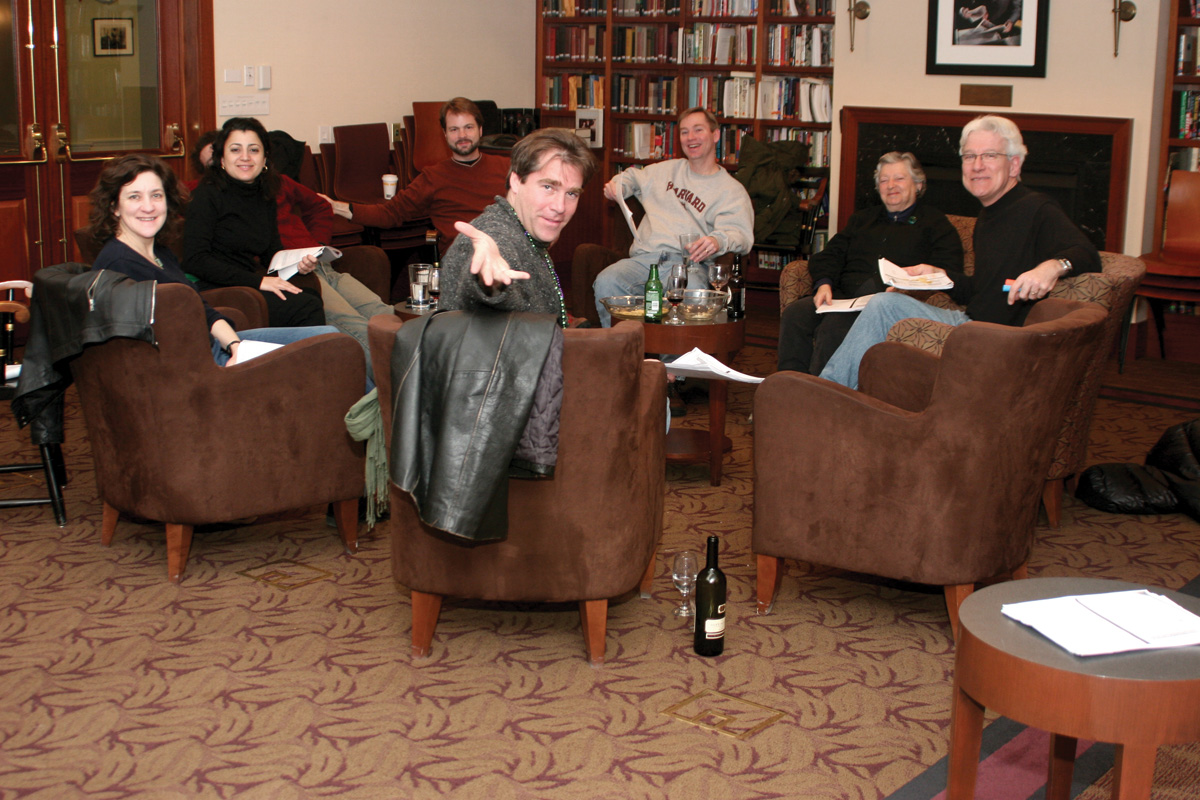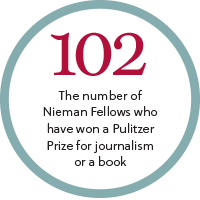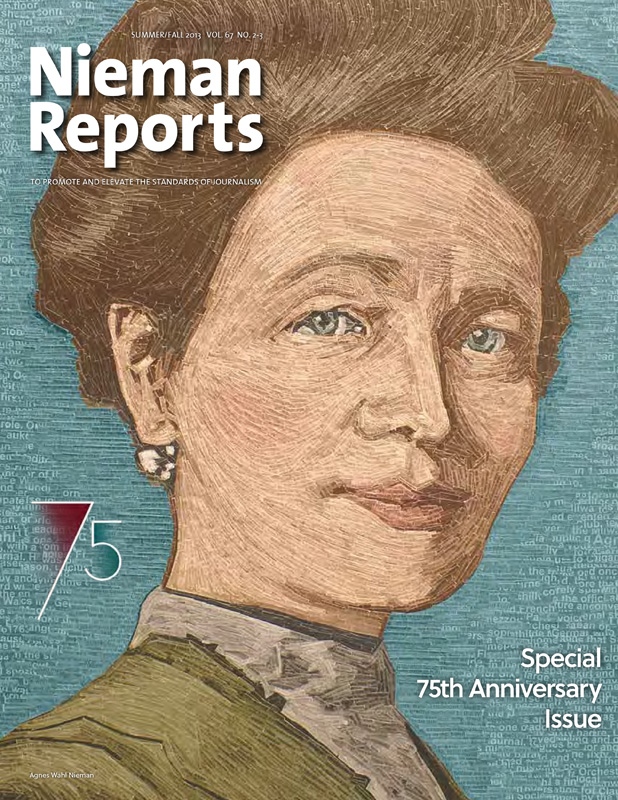
Fiction instructor Rose Moss, second from right, with members of the Class of 2006
Fiction instructor Anne Bernays and nonfiction instructor Paige Williams, NF ’97, recall how the Nieman writing courses got started in 1945 and 1998
Signing on to teach crack journalists how to write is a little like contracting to teach Royal Shakespeare Company members how to act. Don’t they already know how?
Beginning in 1945, Theodore Morrison, novelist, poet and professor of creative writing at Harvard from the ’30s through the ’60s, taught the Fellows how to write better.
Shortly after James C. Thomson Jr. became curator in 1972, his wife, Diana, started a weekly writing class. The freethinking and free talking that went on in her classes made a vivid impression on her students.
In 1989, Nieman Fellows Daniel Biddle and Ann Marie Lipinski, now the curator, took my writing class at Harvard’s Extension School. The following year curator Bill Kovach brought me in to teach Niemans. I have been teaching fiction writing at the Foundation ever since. From 1992 to 2011, Rose Moss, a novelist and short story writer, also taught fiction writing at the Foundation. She is a generous, provocative teacher who is adored by her students.
One of my pet theories is that the imagination can be twisted and stretched, like the muscles of your body, and the more you twist and stretch the imagination, the more agile it becomes. This is why I teach via exercises, each one focused on a single aspect of writing, such as dialogue, plot, or the inner lives of characters. I also emphasize being skeptical, looking beneath the surface, questioning the smile, digging out unspoken truths. These skills apply to journalism as well as to fiction.
But in teaching Niemans, especially print journalists, I find my most difficult task is to loosen and toss away the bonds that tie reporters to the facts. “I can’t make anything up!” is always the argument. The same talent that makes them excellent reporters keeps them from easily writing fiction. There is also often a touch of guilt about pure storytelling. Isn’t that what children do? It’s a psychological obstacle that needs breaking down. I’m the deprogrammer.

The Nieman narrative program began with a simple question from Robert Vare, NF ’97. Wouldn’t it be great, he said at the end-of-year meeting on ideas for improving the program, if we offered a seminar on narrative nonfiction?
Vare had come from editorships at The New Yorker and The New York Times Magazine. A number of his classmates, myself included, shared his respect for strong storytelling and supported his idea to add a narrative seminar, supplementing the fiction classes.
The writer Natalie Kusz taught an undergraduate nonfiction course at the time, and a few Niemans took it, but otherwise Harvard offered little then, as now. “It was almost like they didn’t recognize that this was just as serious as poetry and fiction and playwriting,” Vare says. “And so if Niemans were going to take the undergraduate course because they felt this desire to test themselves, to have this experience, why not try it within the actual confines of the Nieman program?”
Vare envisioned a workshop that would expand the way journalists write and the way they think about writing, and would incorporate techniques of fiction and storytelling into the regular duties of reporting and research. The workshop continued under curator Bob Giles, who added the Nieman Conference on Narrative Journalism, which ran from 2001 to 2009, and the Narrative Digest website, which morphed into the Foundation’s current site for the study and furtherance of narrative journalism, Nieman Storyboard.
In her first year as curator, Ann Marie Lipinski instituted a special end-of-year reading night: a cozy, raucous and occasionally weepy evening during which the narrative and fiction writers share excerpts of their work with the whole Nieman class. It’s quickly becoming one of the most memorable nights of the year.



